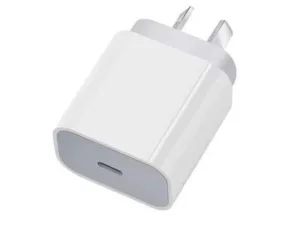The AU plug, commonly referred to as the Australian plug, is a standard electrical plug used primarily in Australia, New Zealand, Fiji, Papua New Guinea, and several other Pacific island nations. Understanding the AU plug type is essential for anyone planning to use electrical devices in these regions, whether for travel, business, or relocation. This article delves into the characteristics, specifications, and safety standards of the AU plug type, providing a comprehensive overview.

History and Evolution of the AU Plug Type
The AU plug type, also known as Type I, has evolved over the decades to meet the growing demands for safety and functionality. The design is rooted in the British plug system, reflecting Australia’s historical ties to the United Kingdom. However, the AU plug has undergone modifications to better suit the region’s electrical infrastructure and to enhance user safety. Understanding this evolution provides insight into why the AU plug type looks and functions the way it does today.
Physical Characteristics and Design
The AU plug is distinct in its design, featuring two flat, V-shaped pins that are slightly angled towards each other. This configuration ensures a secure fit into the socket, reducing the risk of accidental disconnection. Additionally, the AU plug includes a third pin, a grounding pin, which is essential for devices requiring an earth connection. This pin is situated above the two flat pins and is longer, ensuring that the grounding connection is made before the live and neutral connections.
The plug is typically rated for 10 amps, 240 volts, and 50 Hz, making it suitable for a wide range of household and commercial appliances. The robust design ensures durability and reliability, even with frequent use.
Compatibility and Usage in Different Regions
The AU plug type is not only used in Australia but also in New Zealand, Fiji, Papua New Guinea, and several other countries in the Pacific region. Travelers and businesses operating in these regions must ensure their electrical devices are compatible with the AU plug type. Many modern electronic devices, such as laptops and smartphones, are equipped with universal power supplies that can handle different voltages and frequencies, but an adapter may still be required for the plug itself.
It’s important to note that while the AU plug is compatible with sockets in the mentioned regions, it is not interchangeable with plugs from other countries without an adapter. For example, European or North American plugs will not fit into an AU socket without the appropriate adapter or converter.
Safety Standards and Regulations
Australia has stringent safety standards for electrical plugs and sockets, ensuring that the AU plug type meets rigorous safety requirements. The Australian Standards (AS/NZS 3112) govern the specifications for plugs and sockets, including dimensions, pin configurations, and electrical ratings. These standards are in place to prevent electrical hazards, such as short circuits, electric shocks, and fire risks.
One of the key safety features of the AU plug is the mandatory grounding pin, which provides an additional layer of protection for users. The grounding pin ensures that any excess electricity is safely discharged into the earth, reducing the risk of electrical shock. Additionally, many AU plugs come with insulated pins, further enhancing safety by minimizing the risk of accidental contact with live parts.
Common Applications of the AU Plug Type
The AU plug is widely used in various applications, ranging from household appliances to industrial equipment. Common household items such as refrigerators, televisions, washing machines, and air conditioners typically use the AU plug type. In commercial settings, the plug is used for equipment like computers, printers, and medical devices.
In industrial environments, where higher power ratings are required, variations of the AU plug may be used, with thicker pins and a more robust design to handle the increased electrical load. Understanding the specific requirements of your equipment is crucial when selecting the appropriate plug type.
Adapting Devices to the AU Plug Type
For those traveling to or relocating in Australia and its neighboring regions, adapting devices to the AU plug type is essential. This can be done through the use of plug adapters or converters. Plug adapters allow you to connect your device’s plug to an AU socket, while converters are necessary if your device operates on a different voltage than what is supplied in Australia (240V).
It’s important to choose the right adapter or converter to avoid damaging your devices. Using a converter that does not match your device’s power requirements can lead to overheating, electrical shorts, or permanent damage to your equipment. Therefore, always check your device’s voltage and wattage ratings before using an adapter or converter.
The Future of the AU Plug Type
As technology continues to evolve, so too will the standards and designs of electrical plugs. There is ongoing research into developing more energy-efficient and safer plug designs, including smart plugs that can monitor and control power usage remotely. While the AU plug type is expected to remain the standard for the foreseeable future, advancements in materials and technology may lead to enhanced versions of this plug type.
Conclusion
The AU plug type is a crucial component of the electrical infrastructure in Australia, New Zealand, and several Pacific nations. Its unique design, compatibility, and adherence to stringent safety standards make it a reliable choice for both household and industrial applications. Whether you are a traveler, a business owner, or an engineer, understanding the AU plug type is essential for ensuring the safe and effective use of electrical devices in these regions. As technology advances, the AU plug type will continue to evolve, maintaining its relevance in a rapidly changing world.

